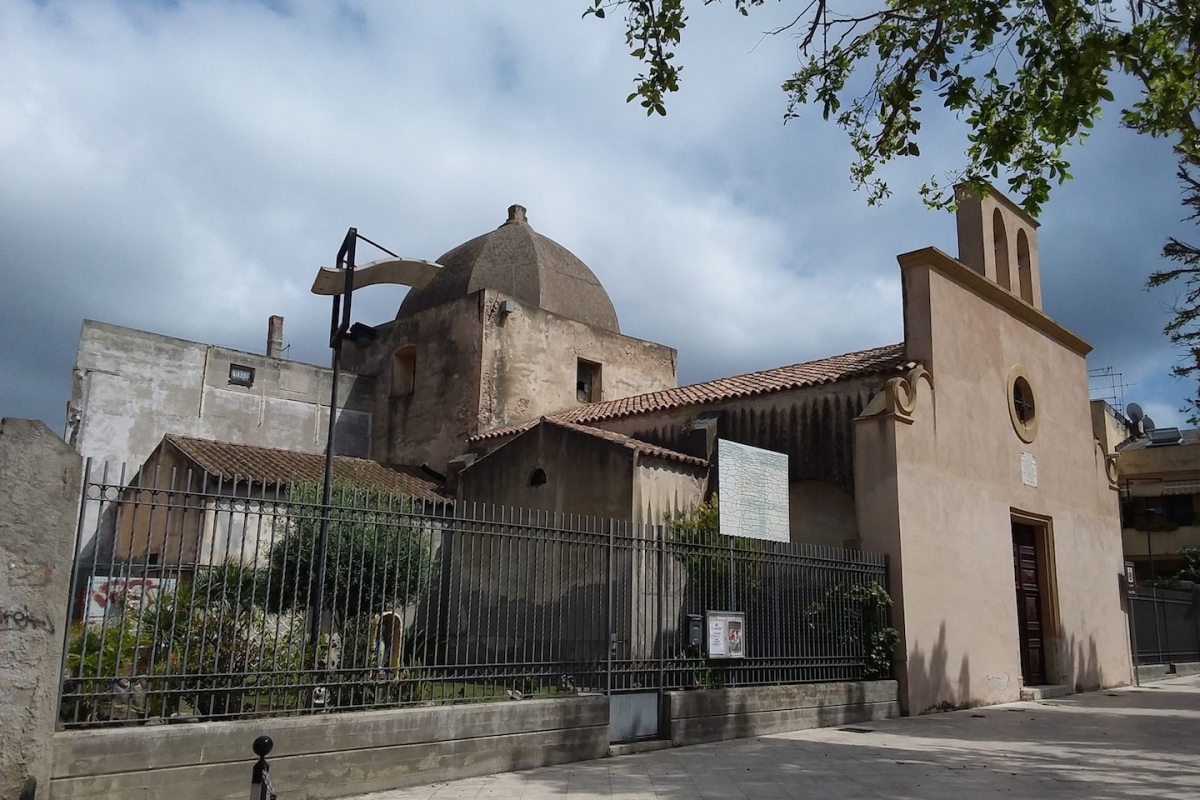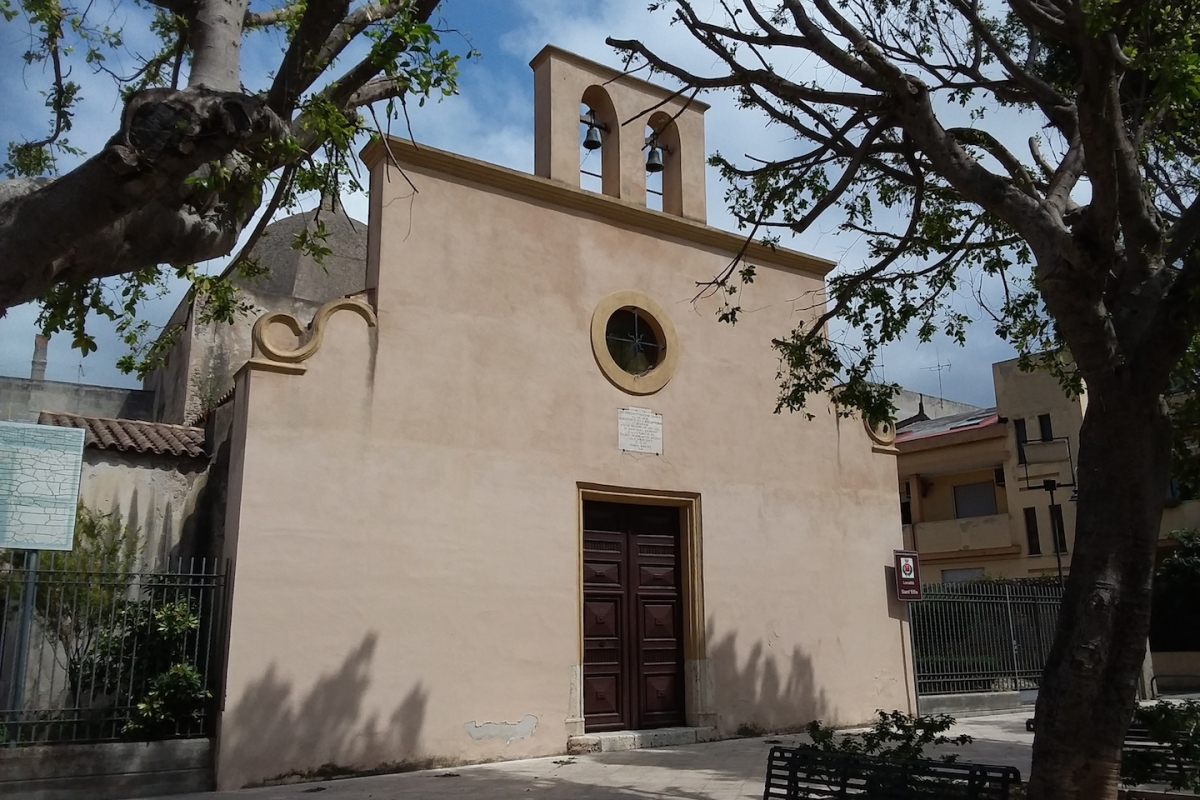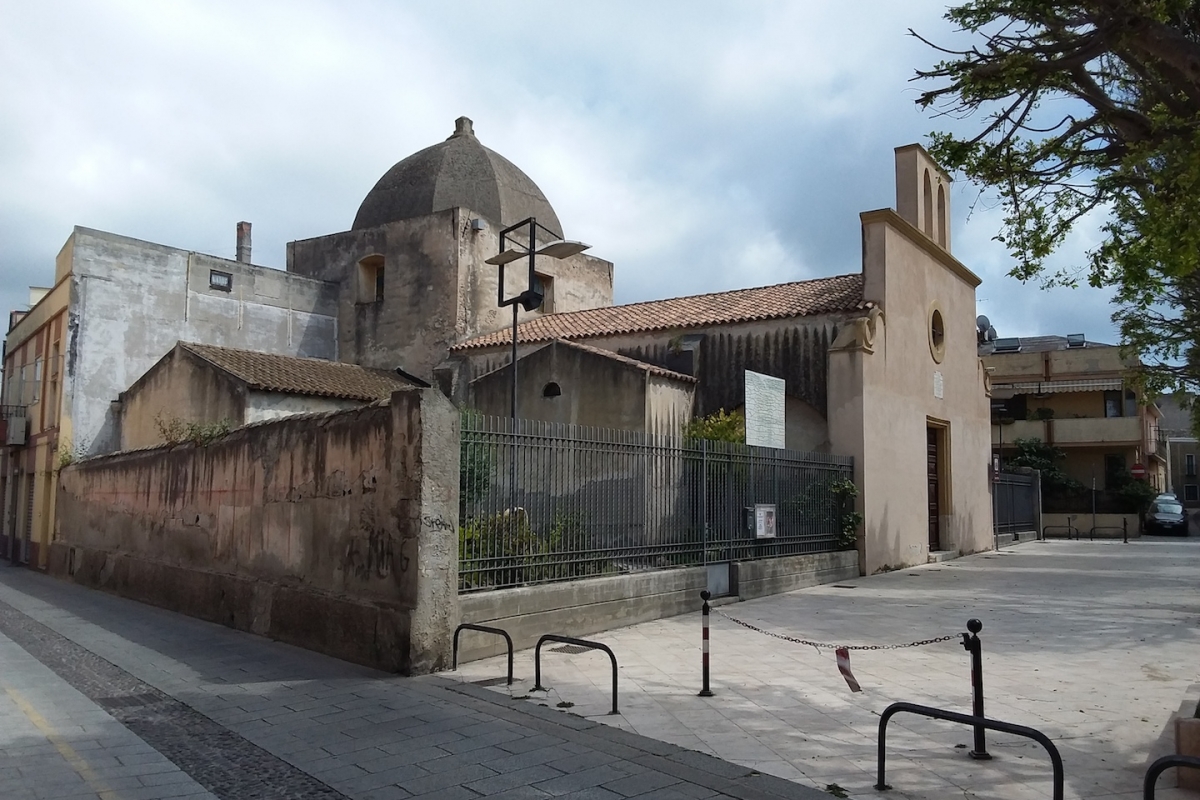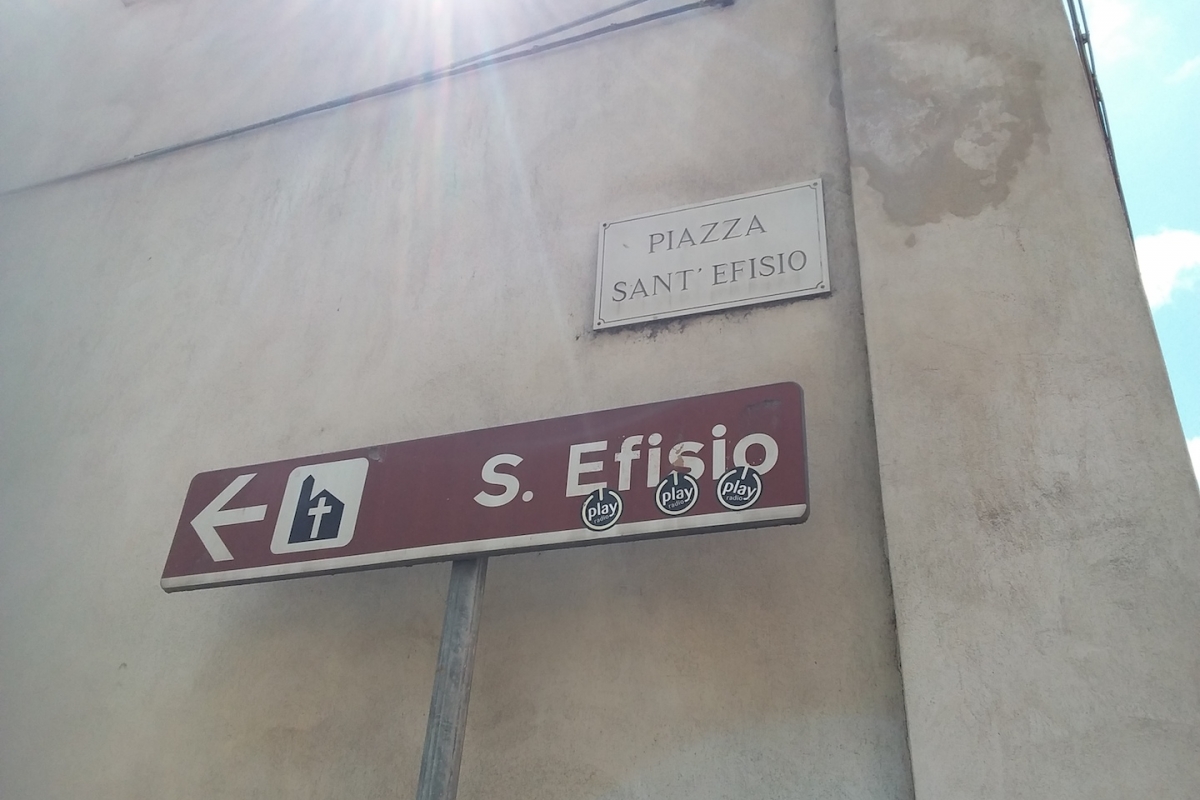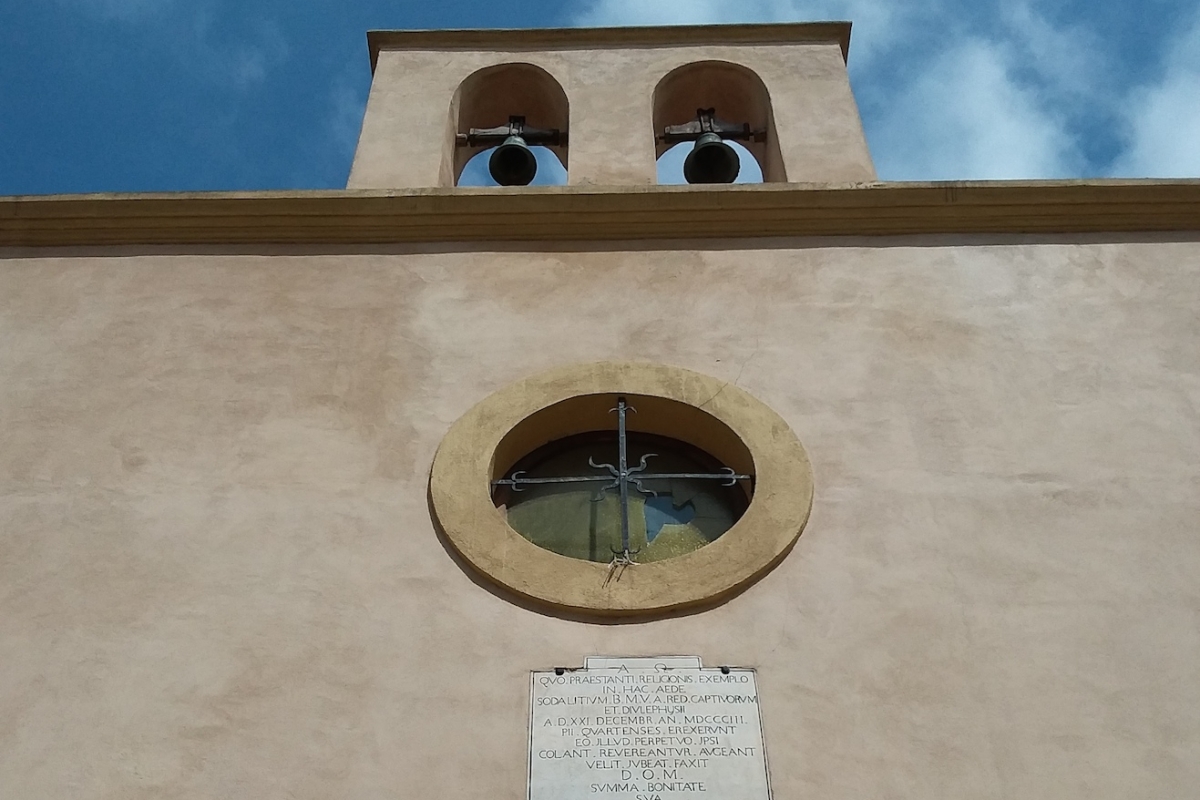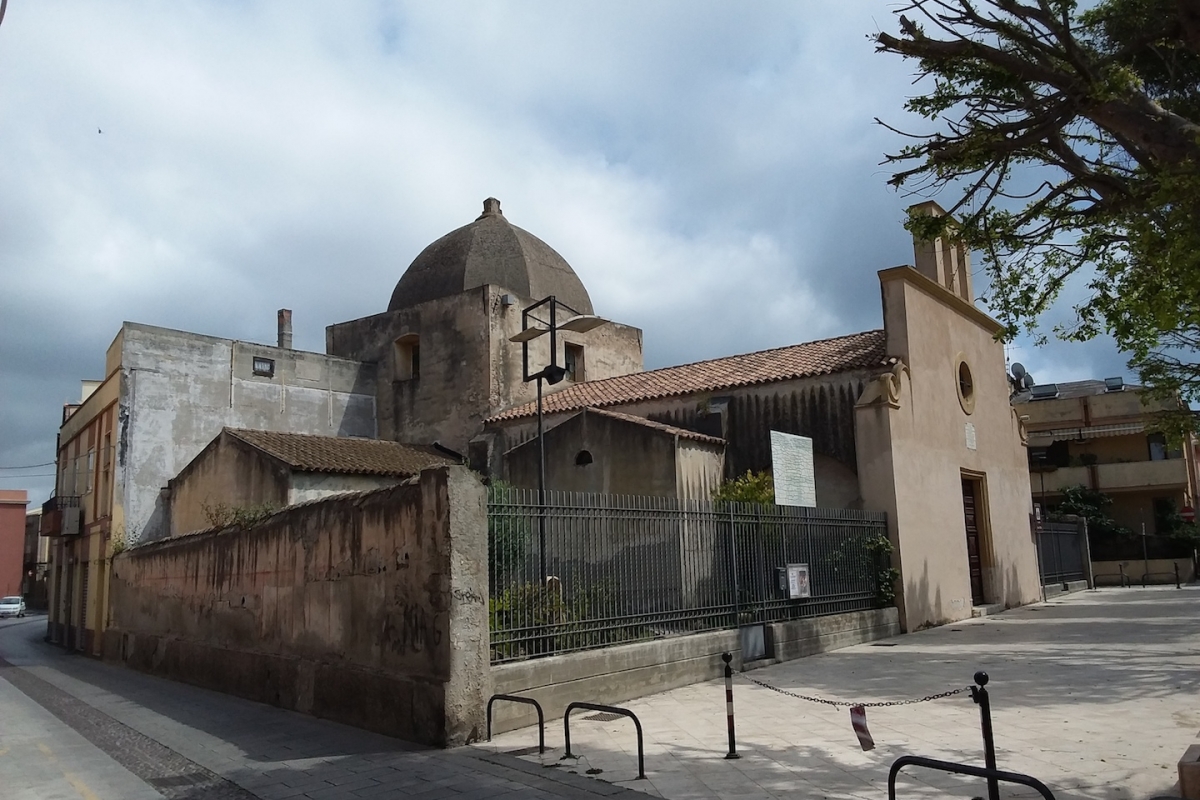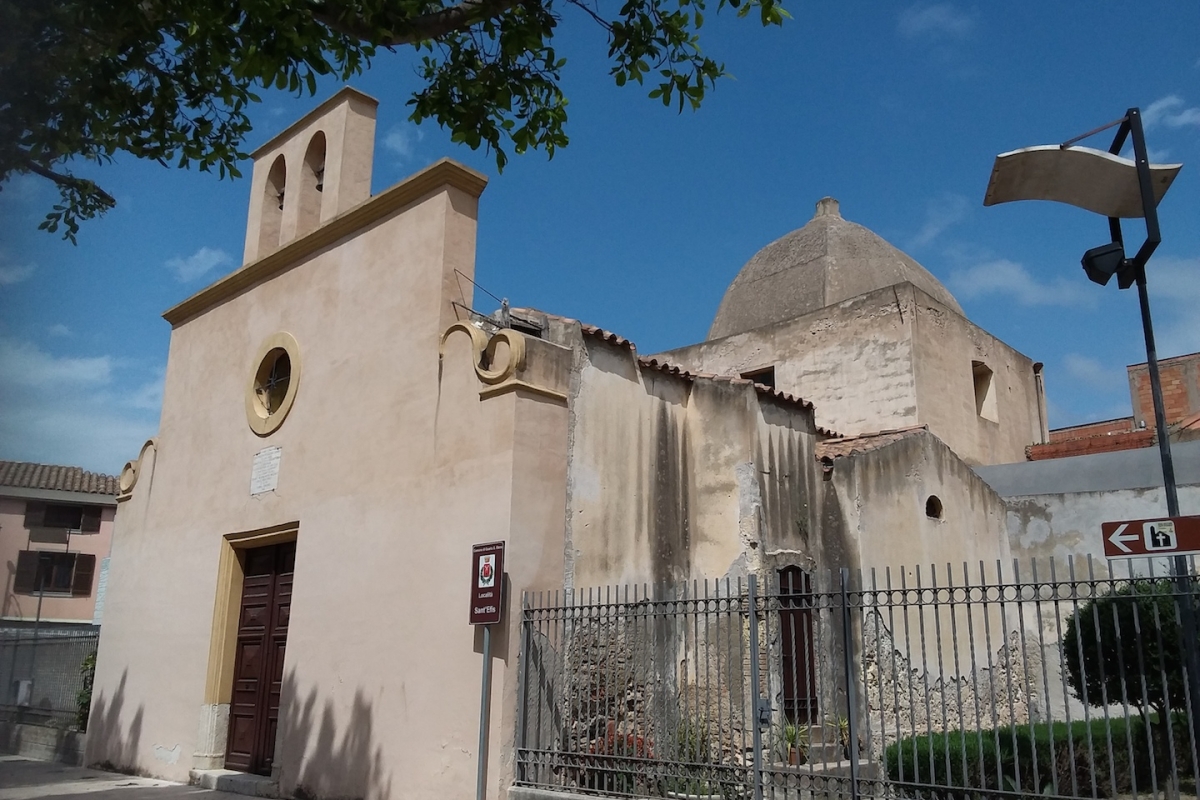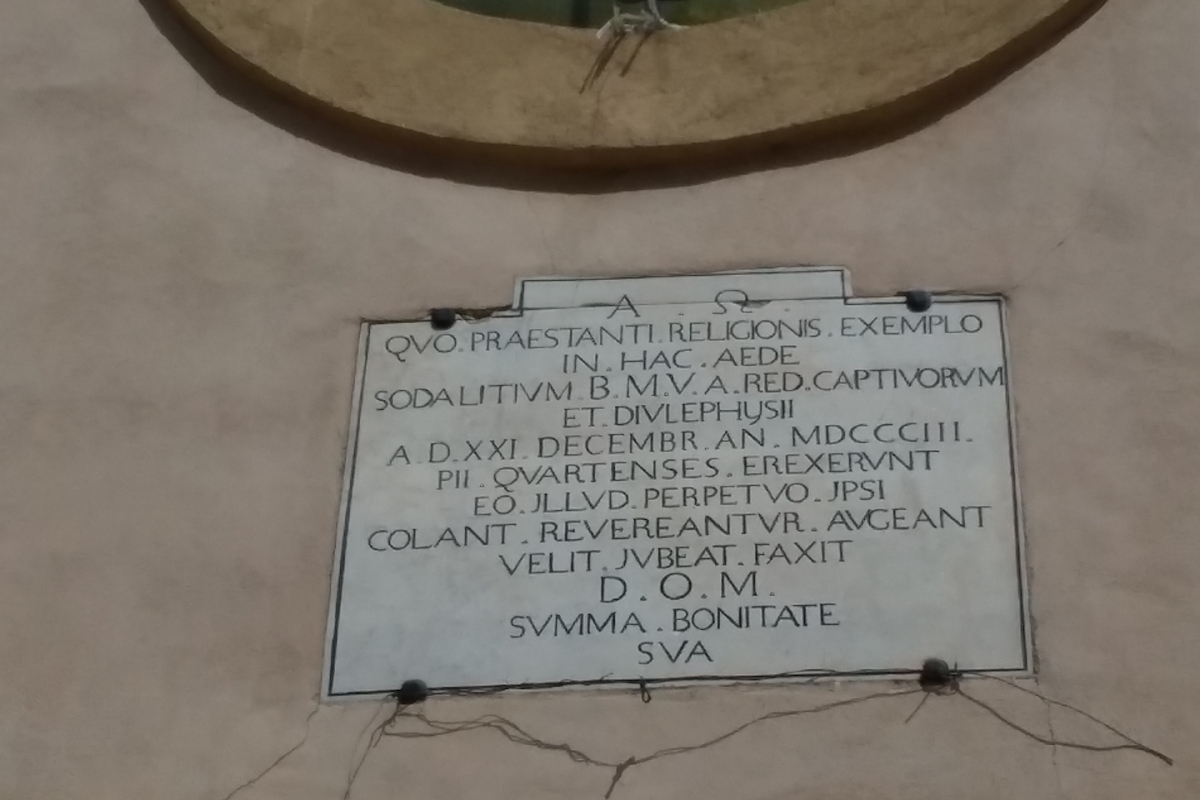Saint Efisio Martire Church
The church of Sant Efisio martire, initially dedicated to St Ephisius and St Sebastian, was built starting in 1728 thanks to a bequest from the benefactress from Quarto, Maria Piras, although some references suggest its existence already in medieval times.
With the construction of the church, connecting streets were also built, renamed Via Garibaldi and Via Martini in the 20th century. The church overlooks the square of the same name.
The building is characterised by a simplicity of lines and a late 17th-century style similar to that of other minor churches built in Sardinia.
Remained in a state of semi-abandonment for many years, it has undergone various restoration works that have damaged the original masonry.
Despite the documented alterations throughout its existence, the church is close to its original layout. Made of sandstone and unfired earth bricks (ladiri), the structure has a rectangular plan and the side elevations are supported by oblique buttresses.
The simple façade, characterised by two volutes closed at the top with moulded stone cornices where the entrance door, also framed by sandstone, is placed in the centre, is surmounted by a bell gable.
The decorations on the stone façade are completely repainted and the façade has completely lost the stylistic character given by the sandstone.
Inside, the church has a single nave covered by a barrel vault punctuated by three round arches. Two chapels built at different times overlook the hall and the presbytery is covered by an octagonal dome resting on a square drum.
Between the buttresses supporting the three arches are two chapels on each side, one of which is frescoed. The vault is adorned with a medallion with symbols of the saints.
Before the presbytery are two other rooms of similar dimensions to the chapels, the sacristy with a barrel vault and stone mouldings, also repainted, and another room with a wooden truss ceiling rebuilt in the late 1990s.
Among the furnishings still present in the building, we find a bell dated 1717, a 19th-century wooden pulpit of local workmanship and a polychrome wooden sculptural group dating back to the first decade of the 19th century of the Neapolitan school, depicting the saint Buonaventura and at his feet two hooded figures, representing the Confraternity of Sant'Efisio founded on 24 December 1802. Finally, of some interest is a 19th-century oil on canvas painted by a popular painter depicting the Virgin of Lightning protecting from above with her blue cloak the village of Quartu below threatened by a storm.








